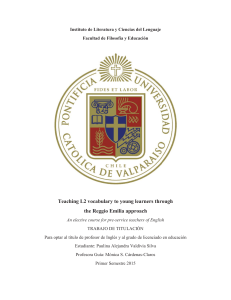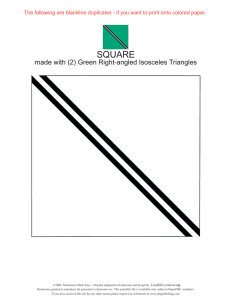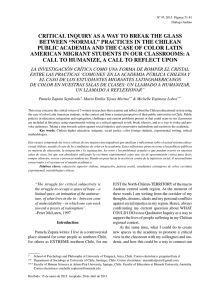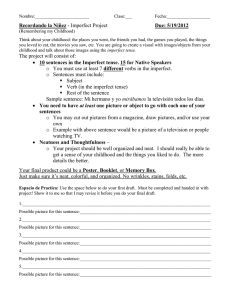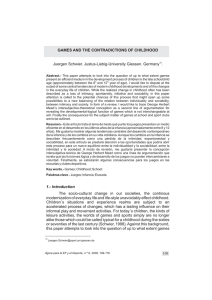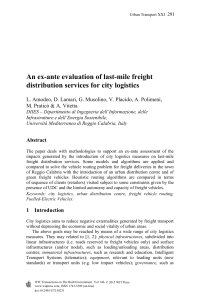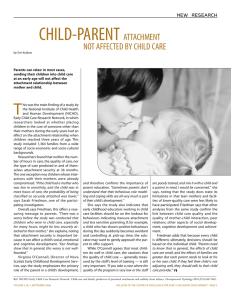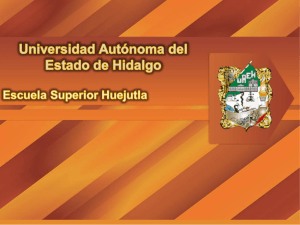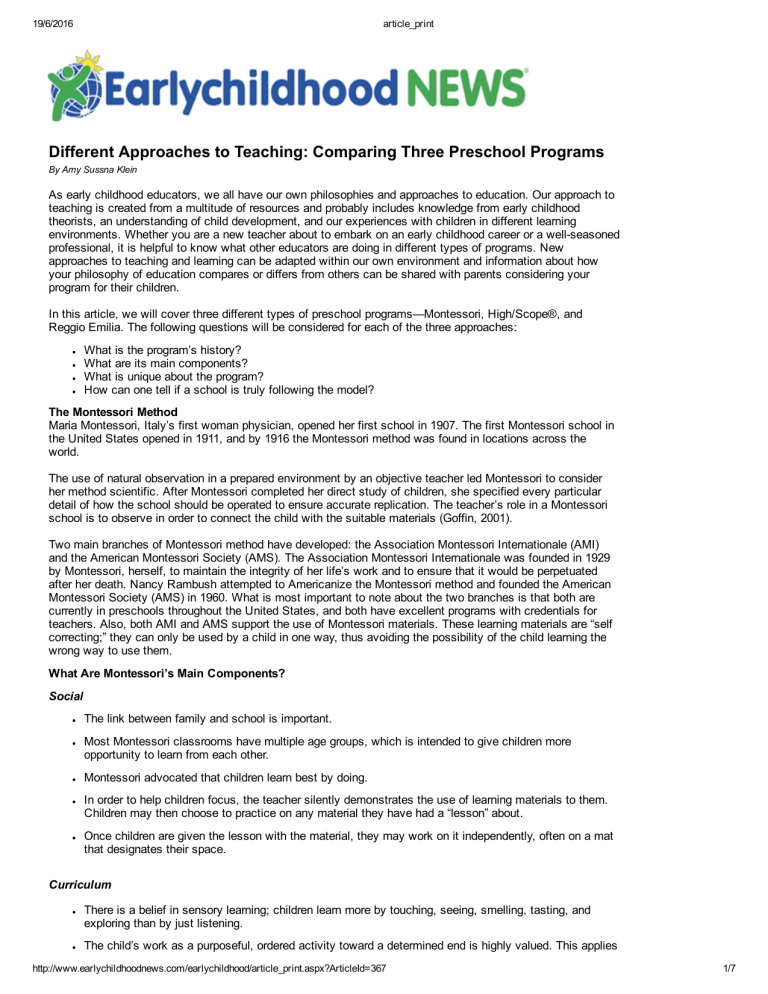
19/6/2016 article_print Different Approaches to Teaching: Comparing Three Preschool Programs By Amy Sussna Klein As early childhood educators, we all have our own philosophies and approaches to education. Our approach to teaching is created from a multitude of resources and probably includes knowledge from early childhood theorists, an understanding of child development, and our experiences with children in different learning environments. Whether you are a new teacher about to embark on an early childhood career or a well­seasoned professional, it is helpful to know what other educators are doing in different types of programs. New approaches to teaching and learning can be adapted within our own environment and information about how your philosophy of education compares or differs from others can be shared with parents considering your program for their children. In this article, we will cover three different types of preschool programs—Montessori, High/Scope®, and Reggio Emilia. The following questions will be considered for each of the three approaches: What is the program’s history? What are its main components? What is unique about the program? How can one tell if a school is truly following the model? The Montessori Method Maria Montessori, Italy’s first woman physician, opened her first school in 1907. The first Montessori school in the United States opened in 1911, and by 1916 the Montessori method was found in locations across the world. The use of natural observation in a prepared environment by an objective teacher led Montessori to consider her method scientific. After Montessori completed her direct study of children, she specified every particular detail of how the school should be operated to ensure accurate replication. The teacher’s role in a Montessori school is to observe in order to connect the child with the suitable materials (Goffin, 2001). Two main branches of Montessori method have developed: the Association Montessori Internationale (AMI) and the American Montessori Society (AMS). The Association Montessori Internationale was founded in 1929 by Montessori, herself, to maintain the integrity of her life’s work and to ensure that it would be perpetuated after her death. Nancy Rambush attempted to Americanize the Montessori method and founded the American Montessori Society (AMS) in 1960. What is most important to note about the two branches is that both are currently in preschools throughout the United States, and both have excellent programs with credentials for teachers. Also, both AMI and AMS support the use of Montessori materials. These learning materials are “self correcting;” they can only be used by a child in one way, thus avoiding the possibility of the child learning the wrong way to use them. What Are Montessori’s Main Components? Social The link between family and school is important. Most Montessori classrooms have multiple age groups, which is intended to give children more opportunity to learn from each other. Montessori advocated that children learn best by doing. In order to help children focus, the teacher silently demonstrates the use of learning materials to them. Children may then choose to practice on any material they have had a “lesson” about. Once children are given the lesson with the material, they may work on it independently, often on a mat that designates their space. Curriculum There is a belief in sensory learning; children learn more by touching, seeing, smelling, tasting, and exploring than by just listening. The child’s work as a purposeful, ordered activity toward a determined end is highly valued. This applies http://www.earlychildhoodnews.com/earlychildhood/article_print.aspx?ArticleId=367 1/7 19/6/2016 article_print both to exercises for practical life and language. The main materials in the classroom are “didactic.” These are materials that involve sensory experiences and are self­correcting. Montessori materials are designed to be aesthetically pleasing, yet sturdy and were developed by Maria Montessori to help children develop organization. Evans (1971) summarized the preschool curriculum in a Montessori program as consisting “…of three broad phases: exercises for practical life, sensory education, and language activities (reading and writing).” (p. 59) Environmental Set­Up Montessori believed that the environment should be prepared by matching the child to the corresponding didactic material. The environment should be comfortable for children (e.g., child­sized chairs that are lightweight). The environment should be homelike, so child can learn practical life issues. For example, there should be a place for children to practice proper self­help skills, such as hand washing. Since Montessori believed beauty helped with concentration, the setting is aesthetically pleasing. In the setting, each child is provided a place to keep her own belongings. What Is Unique About the Program? The environment is prepared with self­correcting materials for work, not play. The Montessori method seeks to support the child in organization, thus pretend play and opportunities to learn creatively from errors are less likely to be seen in a Montessori classroom. Chattin­McNichols (1992) clarifies how Piaget, often called the “father of constructivism,” and Montessori both agreed that children learn from errors, yet the set­up in which errors may occur is controlled differently in the Montessori classroom. The didactic, self­correcting materials assist controlling error versus an adult correcting the child. How Can One Tell If a School Is Truly Following the Montessori Method? The first step to ensure whether a school truly practices the Montessori method is making sure that its teachers are AMI or AMS credentialed. Not every Montessori school has teachers with Montessori training. Although Montessori schools are sometimes thought of as being elitist institutions for wealthy families, this is not true. There are many charter and public Montessori schools. Nor, despite the fact that Montessori began her work with poor special needs children in Rome, are Montessori schools reserved for low ­income children with disabilities. The High/Scope® Approach High/Scope® was founded in 1970 and emerged from the work Dave Weikart and Connie Kamii did on the Perry Preschool Project. This project, initiated in 1962, involved teachers working with children (three and four years old) a few hours a day at a school, attending staff meetings, and making weekly home visits. The program was developed with the idea that early education could prevent school failure in high school students from some of the poorest areas in Ypsilanti, MI (Kostelnik, 1999). The Perry Preschool Program is one of the few longitudinal studies in the early childhood field and had significant findings. For instance, compared with a matched control group, the children that were part of the Perry Preschool Program had significantly more high school graduates and fewer arrests. The High/Scope Foundation is an independent, nonprofit research, development, training, and public advocacy organization. The Foundation’s principal goals are to promote the learning and development of children worldwide from infancy through adolescence and to support and train educators and parents as they help children learn. The High/Scope Approach has roots in constructivist theory. Constructivists believe that we learn by mentally and physically interacting with the environment and with others. Although errors may be made during these interactions, they are considered just another part of the learning process. Although both Constructivism and the Montessori Method involve learning by doing, there are significant differences. In Montessori, for instance, the didactic, self­correcting materials are specifically designed to help prevent errors. Children learn by repetition, instead of by trial and error. The role of pretend play is also different in the two methods. In High/Scope, children’s creative exploration is encouraged, and this sometimes leads to pretend play, while in Montessori, “practical life work” that relates to the real world is stressed. Although Constructivism is a theory of learning, as opposed to a theory of teaching, High/Scope has exemplified an approach of teaching that supports Constructivist beliefs. Thus, children learn through active involvement with people, materials, events, and ideas. What Are High/Scope’s Main Components? http://www.earlychildhoodnews.com/earlychildhood/article_print.aspx?ArticleId=367 2/7 19/6/2016 article_print Social One of the fundamental points in the High/Scope approach is that children are encouraged to be active in their learning through supportive adult interactions. The High/Scope approach includes times for various grouping experiences in the classroom. There are specific periods in each day for small group times, large group times, and for children to play independently in learning centers through out the classroom. Children are encouraged to share their thinking with teachers and peers. Social interactions in the classroom community are encouraged. Teachers facilitate work on problem resolution with children as conflicts arise. When a child talks, the teachers listen and ask open­ended questions; they seek to ask questions that encourage children to express their thoughts and be creative rather than a “closed” question that would elicit more of a yes/no or simplistic answer. Each day the High/Scope teacher observes and records what the children are doing. During the year, teachers complete a High/Scope Child Observation Record from the daily observations they have collected. Curriculum “Key experiences” were designed specifically for this approach. The following is a brief summary of key experiences taken from Kostelnik, Soderman, & Whiren (1999, p. 32). The key experiences for preschool children are: ­Creative representation ­Classification ­Language and literacy ­Seriation ­Initiative and social relation ­Number ­Movement ­Space ­Music ­Time “Plan­do­review” is another major component of the High/Scope framework. Children are encouraged to: 1) plan the area, materials, and methods they are going to work with; 2) do, actually carry out their plan; and 3) review, articulate with the class­room community what they actually did during work time. The review time helps children bring closure to their work and link their actual work to their plan. Cleanup time is a natural part of plan­do­review. Children are given a sense of control by cleaning up. Representative labels help children return materials to appropriate places (Roopnarine & Johnson, 1993). The High/Scope classroom has a consistent routine. The purpose of the resulting predictability is to help children understand what will happen next and encourage them to have more control in their classroom. Environmental Set­Up The High/Scope® classroom is a materials­rich learning environment. Usually, the locations for classroom materials are labeled to help children learn organizational skills. Materials are set­up so that they are easily accessible at a child’s level. This helps facilitate children’s active exploration. Teachers set up the classroom areas purposefully for children to explore and build social relationships, often with well­defined areas for different activities. How Can One Tell If a School Is Truly Following the High/Scope Approach? Teachers new to the High/Scope curriculum sometimes find work confusing because they are not sure of their roles (Roopnarine & Johnson, 1993). Sometimes, a list of the key experiences is displayed in the classroom, but then most of the day is spent in teacher­directed activities. This is not what was meant by key experiences! Key experiences in which the children have plenty of time for active exploration in the classroom, is a major component of the High/Scope approach. Furthermore, the teacher is not just passively facilitating while the children play. Rather, teachers in High/Scope classrooms are interactive (though not interruptive of peers playing). Often the role of a High/Scope teacher is to be actively observing and setting up problem solving situations for children. Plan­do­review was developed to help play become meaningful. There are many ways of implementing the review piece of plan­do­review. One example of successful review is when the children draw of a picture of http://www.earlychildhoodnews.com/earlychildhood/article_print.aspx?ArticleId=367 3/7 19/6/2016 article_print what they worked on. However, it is not usually successful for children to each individually recall during a long large group time. For example, when children sit for a long period of time through large group time and each child is asked to say something (sometimes anything). These group times can grow long and the children get restless or drift off. What Is Unique About High/Scope? “Key experiences,” “plan­do­review,” and the High/Scope Child Observation Record are all unique components of the High/Scope framework. The Reggio Emilia Approach History Reggio Emilia is a small town of about 130,000 people in Northern Italy. In 1991, Newsweek magazine noted that the system of 33 infant/toddler schools and preschools in Reggio Emilia were among the ten best school systems in the world. Over the last 35 years, the teachers in the Reggio Emilia schools have taken the time to carry out a process of collaborative examination and analysis of teaching and learning about children. This examination and analysis has broadened constructivist theory, and the results have been demonstrated to experts in education. (As previously mentioned, “constructivist theory” refers to learning by doing and the development of knowledge and understanding based on the child’s own interests.) For example, in The Hundred Languages of Children (1998) Gardner recognizes how the Reggio approach beautifully connects important early childhood theory with practice. The Reggio Emilia approach will be covered in greater detail than the High/Scope approach and the Montessori method for a number of reasons. First, familiarity with the Reggio Emilia approach is integral to recent developments in early childhood theory and practice. The approach reflects on both constructivism and co­ constructivism. Furthermore, adaptations of the Reggio Emilia approach have not been implemented as long as the other two program models in the United States. Thus, fewer people have actually had experience with Reggio. And finally, it’s a complex approach from a different culture. What Are the Reggio Emilia Approach’s Main Components? Social Cooperation and collaboration are terms that stress the value of revisiting social learning. First, children must become members of a community that is working together (cooperation). Once there is a foundation of trust between the children and adults, constructive conflict may be helpful in gaining new insights (collaboration). Co­construction refers to the fact that the meaning of an experience often is built in a social context. An atelierista is a teacher who has a special training that supports the curriculum development of the children and other faculty members. There is an atelierista in each of the Reggio Emilia preprimary schools. Pedagogistas are built in as part of the carefully planned support system of the Reggio Emilia schools. The word pedagogista is difficult to translate into English. They are educational consultants that strive to implement the philosophy of the system and advocate for seeing children as the competent and capable people they are. They also make critical connections between families, schools, and community. Curriculum One of the special features of the Reggio Emilia approach is called “documentation.” Documentation is a sophisticated approach to purposefully using the environment to explain the history of projects and the school community. It does not simply refer to the beautiful classroom artwork commonly found throughout schools following Reggio Emilia Approach. And, even though it often incorporates concrete examples of both the processes and products that are part of a child’s education, it is more than just that. It is a fundamental way of building connections. Documentation is discussed in more detail in the next section that describes the uniqueness of the Reggio Emilia Approach. Co­construction increases the level of knowledge being developed. This occurs when active learning happens in conjunction with working with others (e.g. having opportunities for work to be discussed, questioned, and explored). Having to explain ideas to someone else clarifies these ideas. In addition, conflicts and questions facilitate more connections and extensions. There is an opportunity to bring in different expertise. Thus, to facilitate co­construction, teachers need to “aggressively listen” and foster collaboration between all the members of the community whenever possible. Real learning takes place when they check, evaluate, and then possibly add to each other’s work. Long­term projects are studies that encompass the explorations of teachers and children. Flowcharts are an organized system of recording curriculum planning and assessment based on ongoing collaboration and careful review. Portfolios are a collection of a child’s work that demonstrates the child’s efforts, progress, and achievements over time. http://www.earlychildhoodnews.com/earlychildhood/article_print.aspx?ArticleId=367 4/7 19/6/2016 article_print Environmental Set­Up In Reggio Emilia, the environment is similar to that found in Montessori schools. However, the environmental set­up as a “third teacher” has been enhanced and extended in the Reggio Emilia approach. Like Montessori, it is believed beauty helps with concentration; the setting is aesthetically pleasing. Reggio Emilia schools create homelike environments. In Reggio, the homelike atmosphere is designed to help make children feel comfortable and learn practical life issues. Each child is provided a place to keep her own belongings. Documentation is a major part of the environmental set­up. Documentation illustrates both the process and the product. In documentation, the child is seen as an individual but also in relation to a group, with various possibilities for the individual. What Is Unique About the Reggio Emilia Approach? Reggio Emilia has become so popular in the early childhood field because it offers many unique curriculum ideas, because of the strong infrastructure for the Reggio schools, and because of the attention to co­ construction. In terms of curriculum, the length and depth of projects is unique in the Reggio Emilia Approach. According to Amelia Gambetti’s presentation for the University of Missouri in Kansas City (April 15, 1993), three weeks is a relatively short project in the Reggio Emilia schools. Using the environment as a third teacher is stressed in the Reggio Emilia Schools. Documentation helps facilitate the environment as a teacher. There are numerous connections to which documentation is integral. Three major connections are the connection between: the many audiences (e.g., parents, children, administrators, community, and staff personnel) and the experience the work itself and the producers (e.g., by revisiting a project at a later time or by redoing a project using a different medium) theory and practice Flowcharts enhance the Reggio curriculum. A flowchart records information in such a way that one can see the step­by­step process of how relationships are built; they help the teachers organize and keep in mind the nature and purpose of the curriculum. The purpose of a flowchart is to tell the past (what happened before), the present (what is being discussed now), and the future (what predictions can be made in preparation for what may emerge). There is an excitement about this process because teachers will see themselves as researchers and look for solutions. Flowcharts are an essential tool for future consideration in establishing an ongoing process of documentation. Flowcharts show acts across time. Therefore, as Forman (May 1995) mentioned in a conversation to the researcher, flowcharts are more of a sequential representation than webbing, which is more of a semantic net with no real flow to it. These are illustrated in the video An Amusement Park for Birds (Gandini and Forman, 1994). The infrastructure, which has been in place for over 30 years and has low turnover, is also unique to the Reggio Emilia Approach. The infrastructure includes atelieristas. In The Hundred Languages of Children: The Reggio Emilia Approach to Early Childhood Education (Edwards, Gandini, Forman, 1993), Vea Vecchi (one of the atelieristas) described her role to Lella Gandini as someone who guides children and teachers. Vecchi stated that this is a role that takes on different styles and attitudes in the 20 preprimary schools in Reggio Emilia. In this conversation with Lella Gandini, Vea Vecchi described the reciprocity of the roles of the teachers, children, and the atelierista: “Working together, guiding the children in their projects, teachers and I have repeatedly found ourselves face­to­face – as if looking in a mirror – learning from one another, and together learning from the children. This way we were trying to create paths to a new educational approach, one certainly not tried before, where the visual language was interpreted and connected to other languages, all thereby gaining in meaning.” (p. 121) Pedagogistas are also an important piece of the infrastructure. The pedagogistas have ongoing collaboration with the people involved with the schools in Reggio Emilia. Most of these pedagogistas are general child development experts, one is a special needs (in the Reggio Emilia schools respectfully called “special rights”) expert, and one is a puppeteer. They are built in as part of the carefully planned support system of the Reggio Emilia schools. http://www.earlychildhoodnews.com/earlychildhood/article_print.aspx?ArticleId=367 5/7 19/6/2016 article_print Co­construction is strongly emphasized in the approach. For example, a child can learn to construct knowledge with peers and adults. Co­construction emphasizes the social nature of such activities in which cognitive conflict is emphasized. Perhaps Loris Malaguzzi (Edwards, Gandini, Forman, 1993), the founder of the Reggio Emilia experience, referred to the force of co­construction when he advocated the following: “We seek to support those social exchanges that better insure the flow of expectations, conflicts, cooperation, choices, and the explicit unfolding of problems tied to the cognitive, affective, and expressive realms” (p. 62). How Can One Tell If a School Is Truly Following the Reggio Emilia Approach? Any school that claims to have a Reggio Emilia approach should be careful to remember that we live in a different culture. Simply copying how the schools in Reggio Emilia operate may miss the point. When someone visits a program that labels itself as a Reggio Emilia school, it is important to hear that the school is an adaptation of the Reggio Emilia approach and not just an attempt to copy it. This adaptation should show that careful, purposeful discussion and collaboration is happening among the adults in adapting the ideas from Reggio Emilia. This approach was never meant to provide a quick fix to schools. Furthermore, it is helpful to understand why Reggio Emilia experts refer to this as an “approach” and not a “model.” They call it an “approach” because it develops over time with a careful reflection upon the population that is being served. Thus the idea that a school can become a “Reggio Emilia school” overnight is unrealistic and could be problematic. For example, teachers could misinterpret the approach and turn their classes into a free­for­all or eclectic approach that does not help children make strong, purposeful connections. To see if a school is a good adaptation of the Reggio Approach, look for the following indicators: 1. teachers reflect on their teaching practices 2. children are celebrated and seen as competent and capable 3. teachers realize it’s an ongoing quest to capture what children are actually doing 4. the use of documentation is evident, and it truly illustrates the children’s explorations (e.g., capturing the process children go through to come up with ideas and examining children’s thought) 5. the teachers seek to learn, not copy, Reggio educators and adapt their knowledge in the school 6. relationships are important (for example teachers with families, children with teachers, teachers with each other, etc.) Conclusion As mentioned in the Introduction, all three of these program models are worthy of respect. Unfortunately, practice and theory don’t always connect. It is damaging when a school or classroom labels itself, as one of the program models and that is all there is – a “nice label.” Also, it’s problematic when teachers have insufficient training (and sometimes no real training at all). For example, with the Montessori method, does the teacher have AMI or AMS credentials? Another issue in identifying a program good for children is making sure a program has not become too eclectic. Sometimes schools choose from so many different program models, aspects in the classroom contradict each other. For example, a school that follows an approach that wants children to learn actively, yet the program has borrowed the idea of children sitting and just repeating the teacher for most of the day. Hopefully these reviews will help families and teachers reflect and connect the theory and practice. Amy Sussna Klein, Ed.D., is President of ASK Education Consulting. She can be reached by email at Askeducation@cs.com. References Chattin­McNichols, J. (1992). The Montessori controversy.New York: Delmar. D ana, N. T. & Westcott, L. (1995). Training opportunities for prospective elementary and early childhood teacher reflection, stimulations, teaching cases, portfolios, and more.Paper presented at the annual meeting at the association of teacher education. St. Louis, MO. Edwards, C., Gandini, L., & Forman, G. (1993). The Hundred Languages of Children: The Reggio Emilia approach to Early Childhood Education. New Jersey: Ablex Publishing Corporation. Edwards, C., Gandini, L., & Forman, G. (1998). The Hundred Languages of Children: The Reggio Emilia approach—advanced reflections. New Jersey: Ablex Publishing Corporation. Evans, E. (1971). Contemporary influences in early childhood education. New York: Holt, Rinehart, and Winston, Inc. Forman, G. (November, 1993). How are children’s cognitive development affected by the Reggio Emilia approach? Speech presented at the annual meeting at the National Association for the Education of Young Children. Anaheim, CA. Gandini, L (Winter 1992). Conversation about documentation. Goffin, S., & Wilson, C. (2001). Curriculum models and early childhood education appraising the relationships. New Jersey: Prentice Hall. Kostelnik, M. Soderman, A., & Whiren, A. (1999). Developmentally appropriate curriculum best practices in http://www.earlychildhoodnews.com/earlychildhood/article_print.aspx?ArticleId=367 6/7 19/6/2016 article_print early childhood education. New Jersey: Prentice Hall. Newsweek (1991, Dec. 2). The 10 Best Schools in the World, and what we can learn from them. 51­64. Roopnarine, J. & Johnson, J. (1993). Approaches to early childhood education.NY: Macmillan Publishing Company. Sussna, A.G. (Winter 1991). Delegation to Reggio Emilia. Sussna, A.G. (1995). The educational impact on preschool teachers of adaptation of the Reggio Emilia documentation process. (UMI No. 9606570). Vygotsky, L.S. (1962). Thought and language.Cambridge, MA: M.I.T. Press. Video Resources Forman, G.E. & Gandini, L. (1991). The Long Jump: A video Analyses of small group projects in early education practice in Reggio Emilia, Italy. Performanetic Press, 19, The Hollow, Amherst, MA. Forman, G.E. & Gandini, L. (1994). An Amusement Park for Birds.Performanetic Press, 19, The Hollow, Amherst, MA. Website Resources info@montessori­ami.org www.americanmontessorisociety.org www.highscope.org/ © 2007 Excelligence Learning Corporation, All Rights Reserved. http://www.earlychildhoodnews.com/earlychildhood/article_print.aspx?ArticleId=367 7/7

